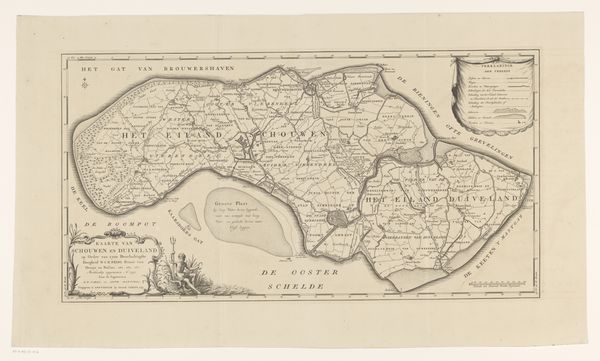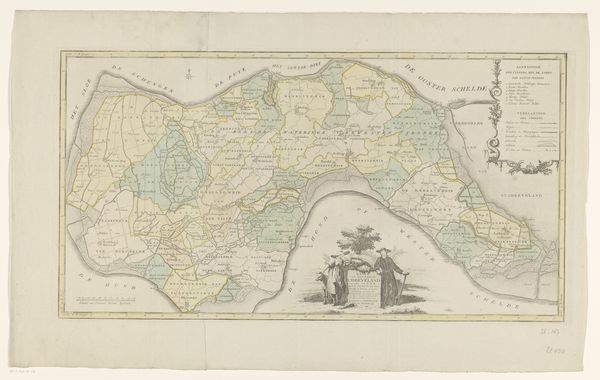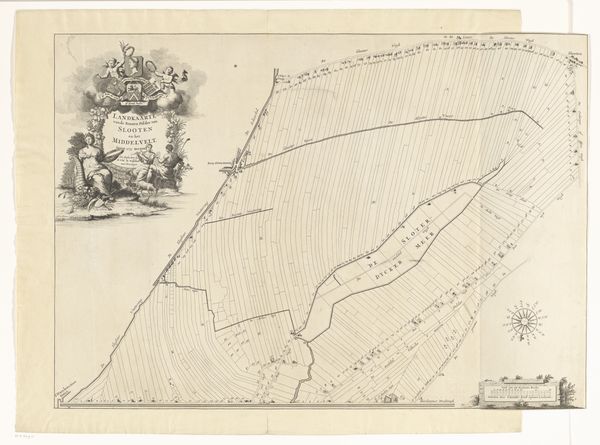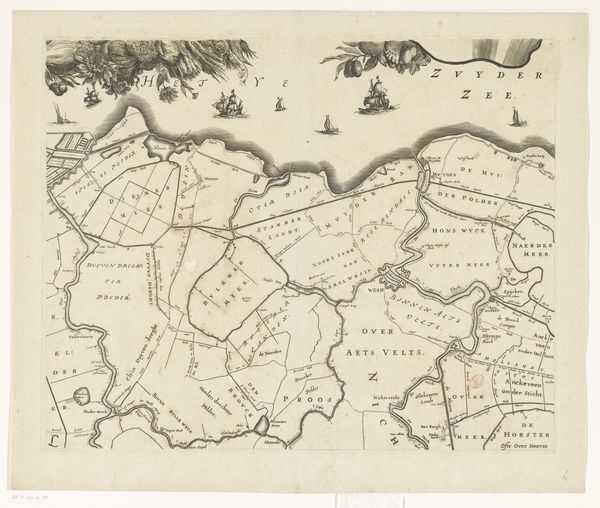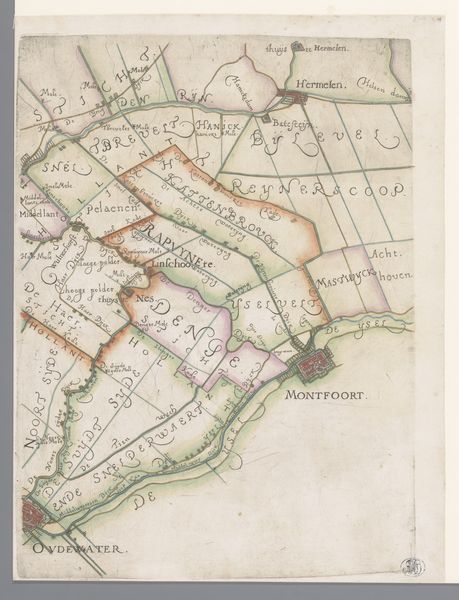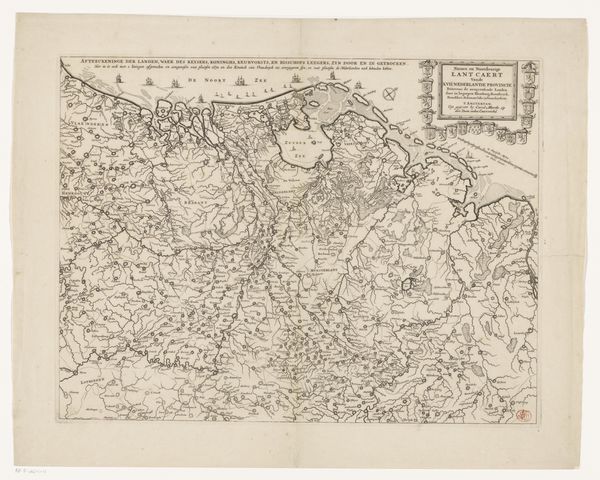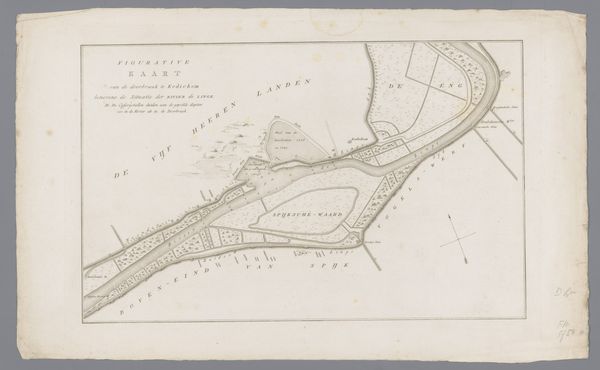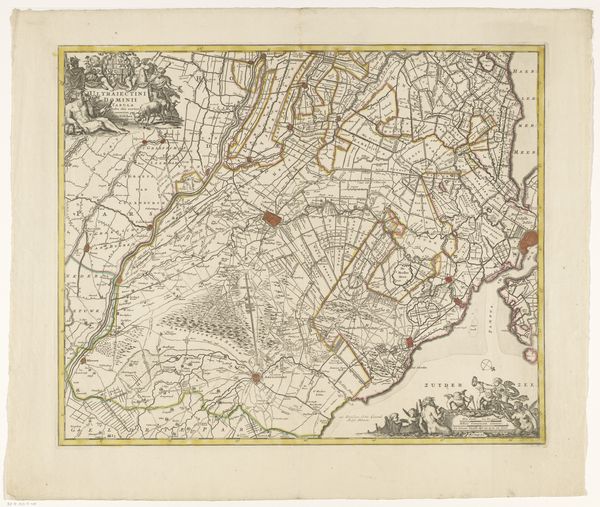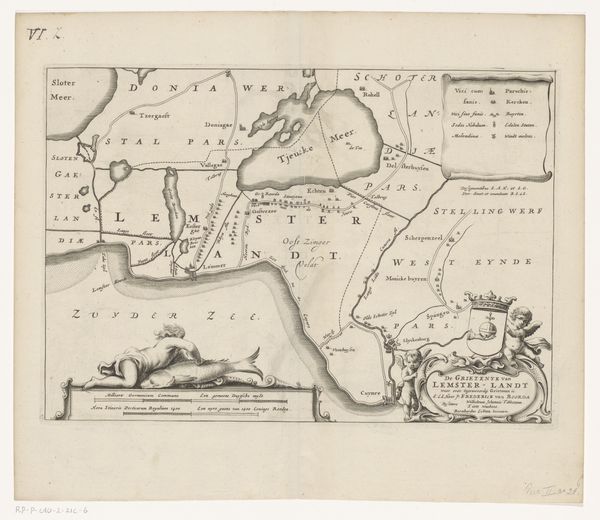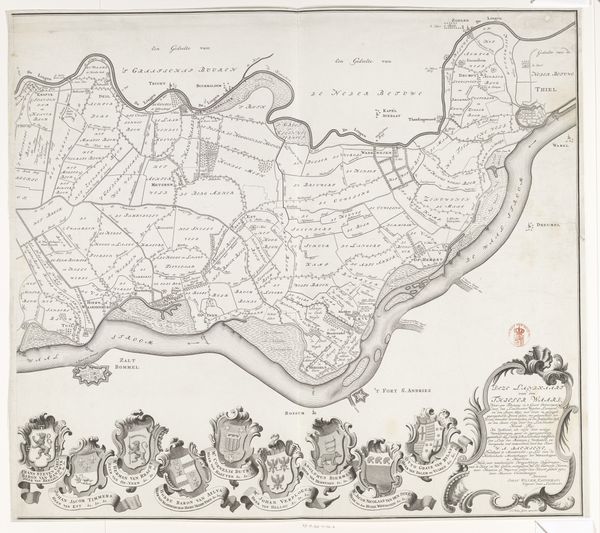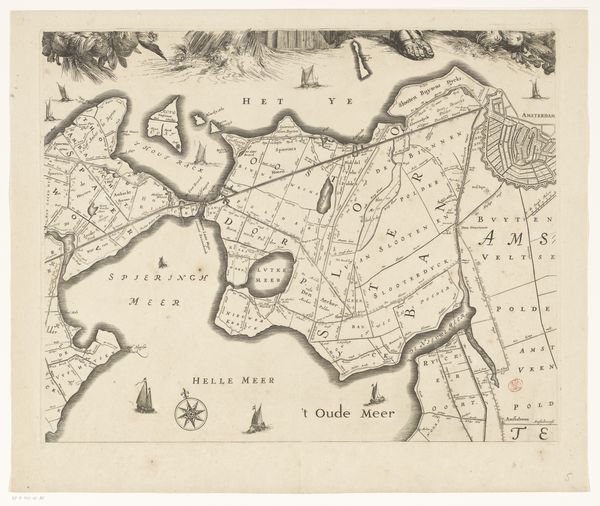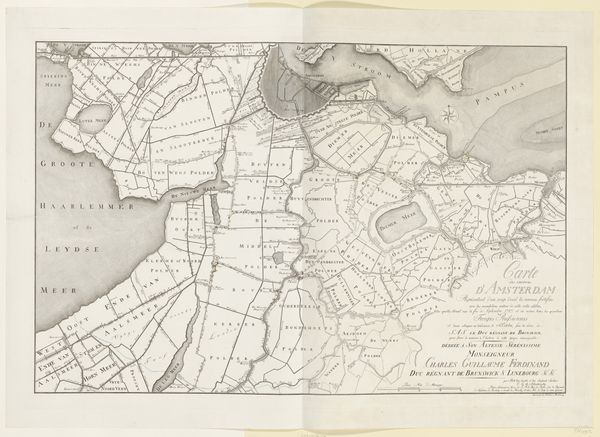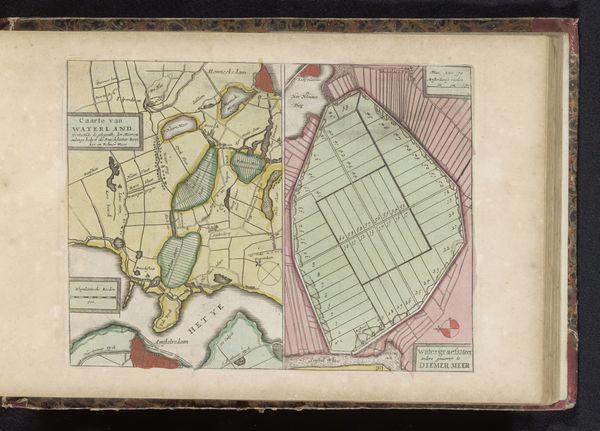
drawing, print, paper, engraving
#
drawing
# print
#
paper
#
geometric
#
engraving
Dimensions: height 495 mm, width 1114 mm, height 546 mm, width 1284 mm
Copyright: Rijks Museum: Open Domain
Editor: This drawing is called "Kaart van Schouwen-Duiveland," dating back to 1748. It's rendered with engraving on paper. At first glance, the intricate linework detailing the landscape is so captivating, especially the way the artist contrasts geometric forms with organic coastal outlines. What can you tell me about this piece? Curator: Examining this engraving closely, one is immediately struck by the strategic deployment of line. The island's cartography relies entirely on line to delineate space, communicate depth, and establish symbolic relationships between different elements. Notice how varying line weights articulate topographical shifts and internal divisions. Editor: Yes, the use of line seems very intentional, guiding the eye throughout the whole map! But what's the significance of the geometric forms you mentioned, in contrast with, let's say, the coastal areas? Curator: These geometric partitions within the island itself offer an insight into a systematized world view—the human impulse to quantify and divide nature into manageable units. Are those lines simply delineating administrative regions? Or do they serve a deeper structural purpose, reflecting a philosophical order imposed on the landscape? The use of orthogonal forms within an organic shape could even mirror broader aesthetic principles and values in 18th-century art. Editor: It's fascinating how this piece is less about literal representation and more about… imposition of form. Now that I see the way the lines define spaces, it’s less about land and more about structure and order. Curator: Precisely. One must appreciate how the medium, engraving, contributes to this impression, allowing for such precise delineation, emphasizing structure over fluidity. I find myself considering it more an abstract meditation than just cartography. Editor: This completely reframes how I understand maps—as artworks that go beyond representation. I'll never look at a map the same way again. Curator: Indeed, engaging with art from a structural perspective enables us to look at art, and in this instance map-making, with refreshed eyes.
Comments
No comments
Be the first to comment and join the conversation on the ultimate creative platform.
